Little by Little Opening Reception
It was wonderful to see everyone at the Little by Little opening reception this past Saturday!
Here are some images from that evening!
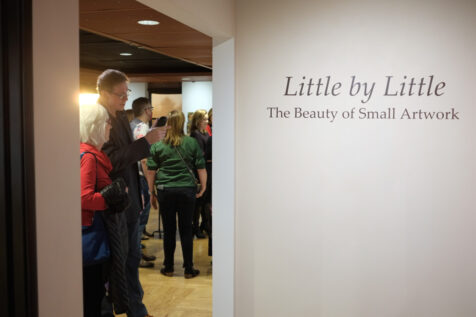
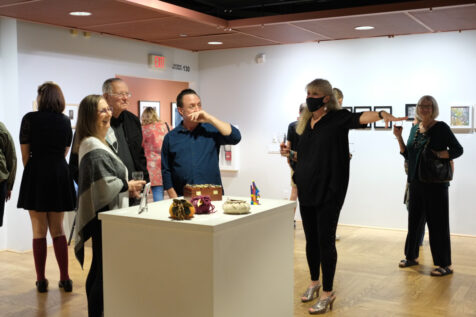
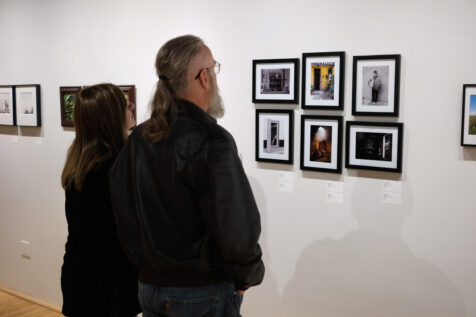
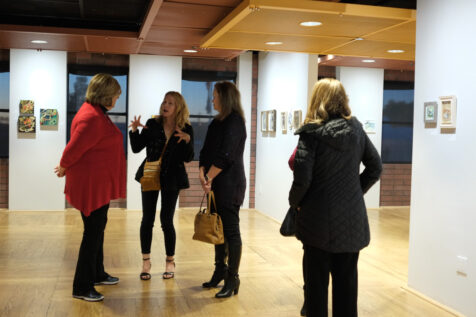
Posted in Event Recaps | Comments Off on Little by Little Opening Reception
It was wonderful to see everyone at the Little by Little opening reception this past Saturday!
Here are some images from that evening!




Little by Little, a juried exhibition of small artworks, presents a wide variety of art expressed in a size no more than twelve-inches in any dimension. Amazing, beautiful, and impactful small works of art presented in a dedicated exhibition from a more intimate viewpoint that begs for a closer look!
These incredible artworks make wonderful gifts for family, friends, or for you too. If you purchase a piece, we will take it off the wall to take it home with you that day.
Banner images by Brandi Kole, Liz Nicklus, Tamera Poff
Thank you to everyone who joined us at Art Intersection for this year’s Light Sensitive opening reception! It was wonderful to see a lot of the artists and their amazing creativity using traditional photographic processes.
Here are some moments from the reception!
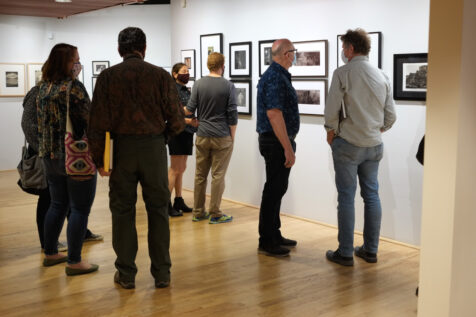

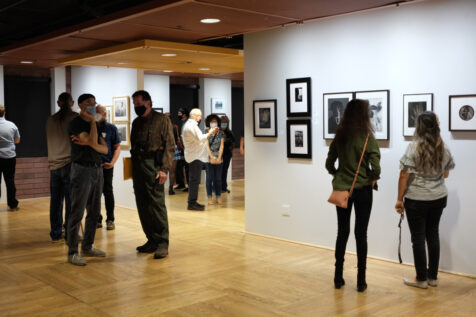
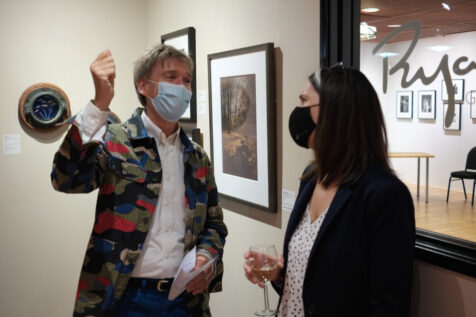
This year marks our tenth All Art Arizona exhibition featuring artwork made by Arizona residents, who were invited to bring friends and family along to admire work sculpture, photography, painting, ceramics, wood, printmaking, mixed media, artist books, and much more.
Take a look at some images from that evening!
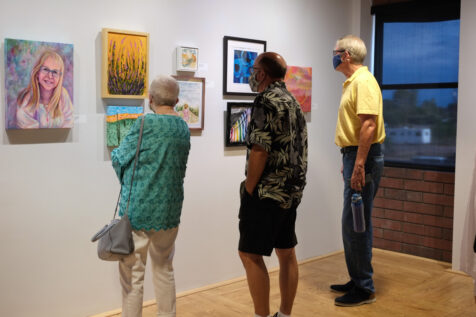
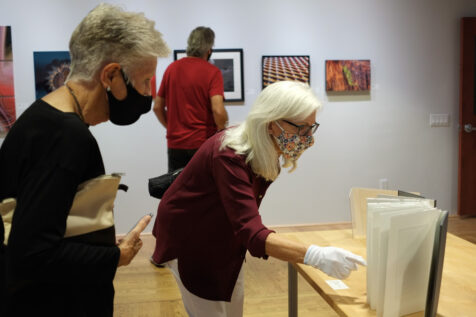
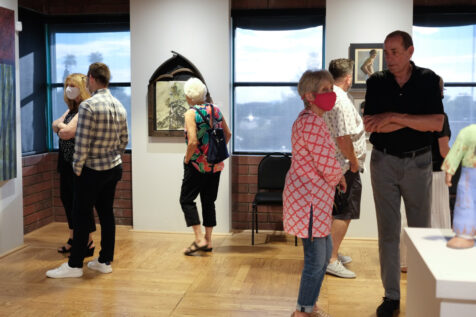
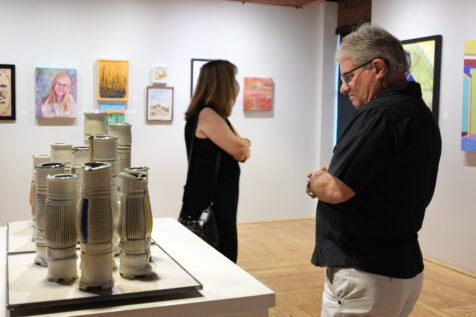

No Strangers exhibition presents artwork created by Art Intersection members and we are proud to showcase their work with this annual exhibition! You can feel the creative energy from the artwork on display, demonstrating the vision and talent of our members.
Memberships support Art Intersection, and through our membership program we strive to create an engaging atmosphere for creativity, networking, sharing work, and learning from each other. From a range of membership levels including Student, Friend, Sponsor, Patron and Collector, you can find the membership that works best for you!
Banner image by Robert Rice
Visitors to this exhibition will experience Mr. Zimmerman’s photojournalism transformed from the covers and pages of Time, Life, Ebony, and Sports Illustrated magazines to framed prints in the Art Intersection North and South Galleries.
Heartfelt gratitude to Linda and Darryl Zimmerman of the John G. Zimmerman Archive for their collaboration to create this special exhibition bringing a perspective of American life through the breadth, innovation, and impact of Mr. Zimmerman’s photography.

Photographer John G. Zimmerman poses for Hawk or Dove, experimental series on political cliches, New York City, 1970.
Virtual Tour of Americanicity
This virtual tour through Americanicity in the Art Intersection Galleries lets you share the exhibition space with your friends and family that can’t visit us in the Gilbert Heritage District. Take a closer look at the individual images in the gallery below.

Cleaning the Stars and Stripes, Detroit, 1954
The images from John G. Zimmerman, a photographer and innovator, bring into view the lives and lifestyles of American families, politics, sports, and society from the 1950s through mid-1970s. This golden era of the Fourth Estate, before the internet and cable news, when photojournalism projected influence through print media, newspapers, magazines, and billboards into our homes and businesses, informed social behavior, personal knowledge, and political policy.

Funeral Procession, Sandersville, Georgia, 1953

Members of Congress on the Steps of the U.S Capitol. Washington D.C. 1951
Americanicity seeks to bridge the photographs of John G. Zimmerman illustrating American social, political, and lifestyle from the mid-twentieth century to the recurrence in today’s contemporaneous news and lifestyle. His images bring into view the patriotic symbol of the American flag, distribution of a new polio vaccine in the African American community, the first televised presidential inauguration (the most watched ever), portraits of political leadership, intimate family dinners, and life in American Black communities.
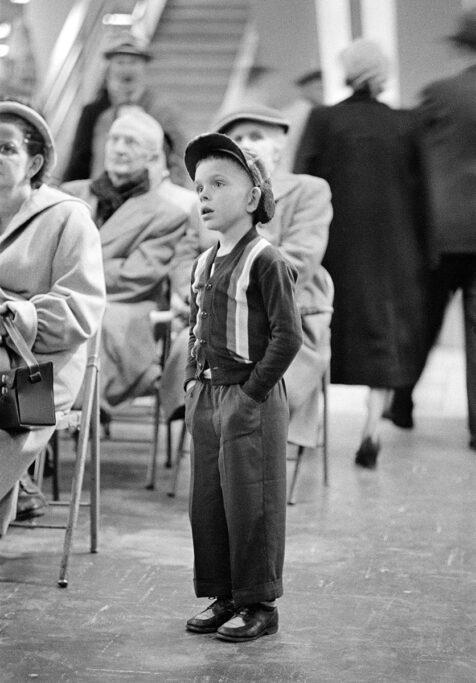
Watching Eisenhower’s inauguration on television, Atlanta, GA, 1953
Americanicity, images that message behavior, and politics unique to America occurred then and now have reoccurred, were constructed and now reconstructed; the corruption, celebration, disappointment, and racism visible during his tenure as a photojournalist recreated again in contemporary United States of America. Mr. Zimmerman covered the whole range of society and American culture (both the positive and negative aspects) with a consistent style and unique presence, visible in all of his images whether reportage, editorial, or commercial.
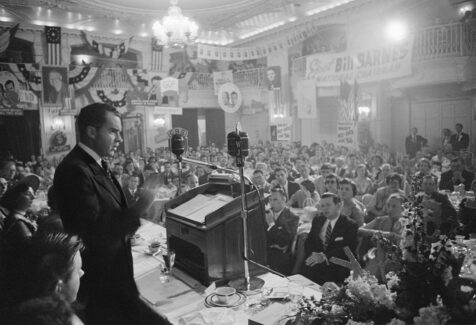
Vice President Richard Nixon at Young Republican Convention, 1955, Detroit
Defining moments of the mid-twentieth century were disseminated through the work of remarkable writers and photojournalists, while today the Fifth Estate of social media and the power of instant communication, shifts photojournalism to image capture on phone cameras. As a foundational figure in the observing, documenting, and commenting on American society and culture, Mr. Zimmerman constructed the foundation for the way we all document, appreciate, and critique America today through our phone cameras.
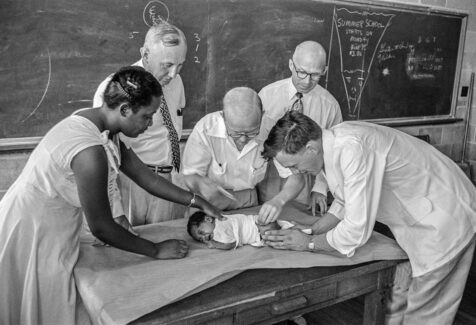
Polio Vaccination, Montgomery Alabama, 1953
Biography
Early in the 1950s a correspondent for LIFE magazine received an assignment to cover a story with a new free-lance photographer named John G. Zimmerman. “How will I know which photographer is Zimmerman?” asked the correspondent. ”Just look for the guy who is screwing his equipment back together,” answered his editor. The anecdote captures Zimmerman’s life-long fascination with camera technology. Making pictures for magazines such as LIFE, Sports Illustrated, Saturday Evening Post and Time as well as commercial work for over four decades, Zimmerman consistently created photographs known for their innovation and artistry.
Growing up in Torrance, California, Zimmerman joined a photographic club in junior high school and spent afternoons developing film with friends in their mothers’ kitchens. Zimmerman’s father, John L. Zimmerman, was a gaffer at a major film studio and further encouraged his son by building a darkroom at home. John G. credited early exposure to his father’s craft in part for his ability to engineer cameras and lighting to his own designs.
Zimmerman’s formal training began with a three-year photography course at John C. Freemont High School in Los Angeles. Taught by Hollywood cinematographer Clarence A. Bach, the intensive program was famous for launching the careers of no less than six LIFE photographers. Bach handed out photo assignments as if he were the editor of a daily newspaper; his students had to be prepared to cover any assignment whether it be a sporting event or an entertainer at a local nightclub. The teenage Zimmerman photographed Bing Crosby and Nat King Cole and made up 11 x 14 prints in his lab, selling them to the singers for $1.50 each.
Zimmerman often cited his early training under Bach as a significant influence in his career. Bach encouraged his graduates to provide guidance to younger photographers just starting out, something that Zimmerman practiced throughout his career and which distinguished him in the competitive world of professional photography. His relationships with fellow Bach graduates, including Life photographers Mark Kauffman and John Dominis, were life-long.
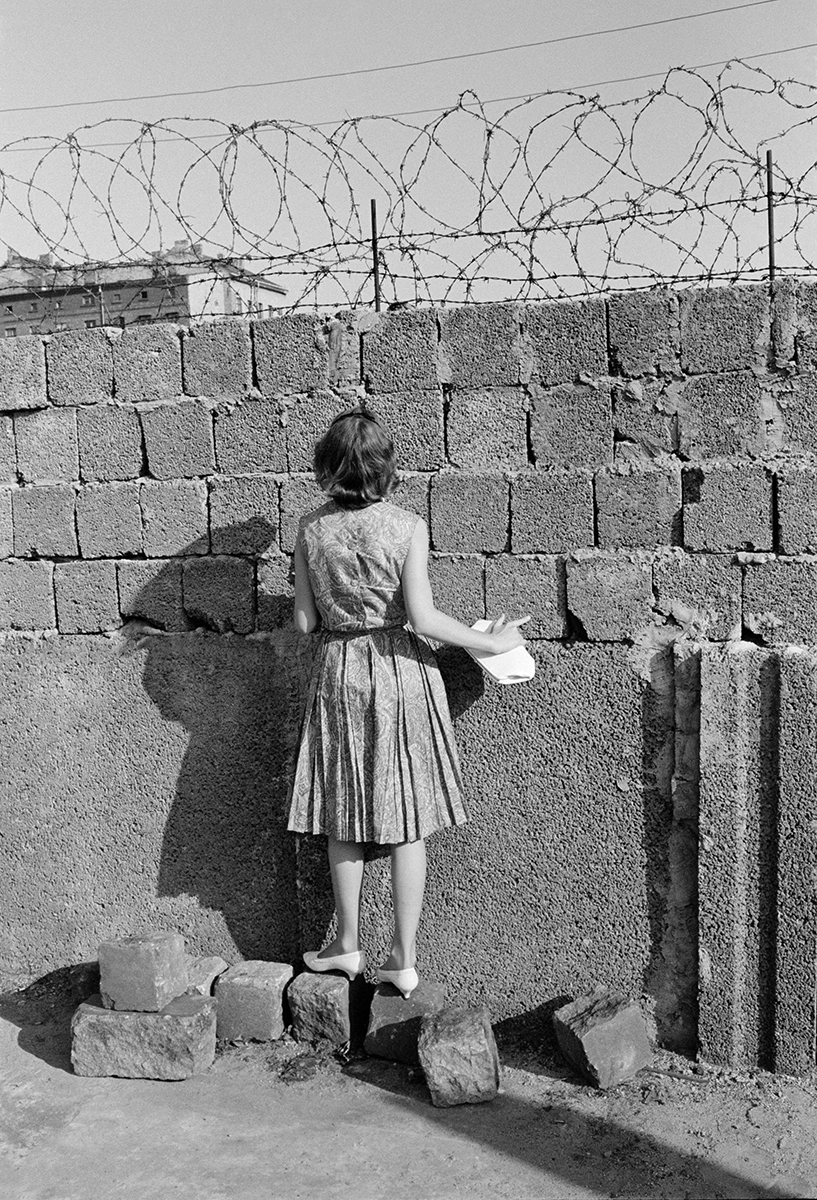
Julie Nixon looks through hole in Berlin Wall, Berlin, W. Germany, 1963
Upon graduating high school, Zimmerman enlisted as a Navy photographer and served briefly. With the help of Bach’s informal alumni network, Zimmerman landed his first job as a staff photographer at the Time bureau in Washington D.C. His first assignment as a Time staffer in 1950 demonstrated a combination of quick thinking and sheer luck. Leaving the White House just as Puerto Rican nationalists attempted to assassinate President Truman, Zimmerman was among the first photographers on the scene. His photos of the assault were featured in both Time and LIFE.
From 1952-1955, Zimmerman photographed a series of assignments for Ebony depicting the lives of African Americans in the Midwest and the Jim Crow south. These photographs are a lesser-known yet notable part of Zimmerman’s early work. The subject matter ranges from the first all black supermarket in Detroit, boxing legend Joe Louis, to sharecropper Matt Ingram’s quest for justice.
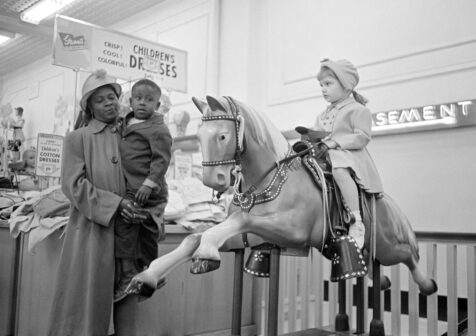
Department Store Ride, Yanceyville, North Carolina, 1953
While the Ebony assignments are straight-forward photojournalism, Zimmerman also created pictures during this time that pushed the boundaries of photojournalism. In 1955, LIFE assigned him to document Detroit’s old Mariners’ Church being moved to a new location across town. The move took four weeks to complete yet Zimmerman created a photo that gives the effect of the church hurtling through downtown Detroit at top speed. The use of technology to show on film what the naked eye could never see became a hallmark of Zimmerman’s mature work.
Sports Illustrated, 1956-1963
Zimmerman’s innovative approach caught the eye of Gerald Astor, Picture Editor of the newly formed Sports Illustrated. Astor hired him in 1956 as one of the magazine’s first staff photographers. While at the magazine, Zimmerman created many memorable images such as Bednarik Knocks Out Gifford (1960) that have become icons of sports photography. But it was his unique camera placements and electronic lighting techniques, combined with his pioneering use of remote controlled cameras, motor-driven camera sequences and double shutter designs that revolutionized how sports were viewed.
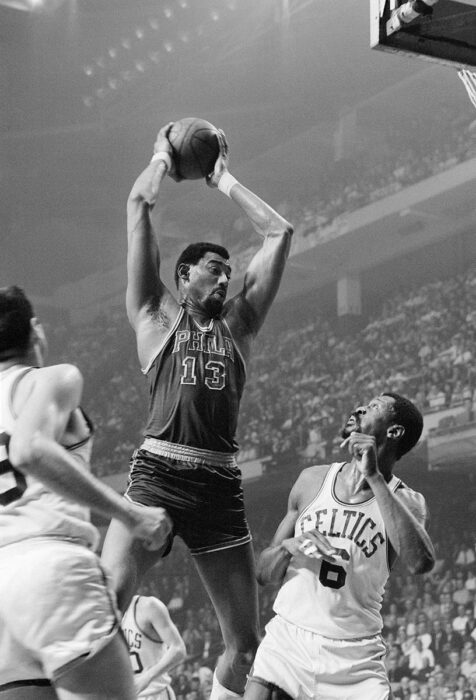
Wilt Chamberlain vs Bill Russell, NBA Playoffs, 1967
To bring readers up close to basketball, for example, Zimmerman put remote-controlled cameras on the glass backboards. Sports Illustrated photographer Walter Iooss Jr. recalled seeing Zimmerman’s 1961 photographs of basketball star Wilt Chamberlain: “it was the first time a photojournalist had placed a camera above the rim of a basket. It was like looking at something from another planet.” Many of Zimmerman’s techniques are commonplace today but were unheard of when he first used them.

Tony Alva skateboards in the Arizona desert. 1978
Zimmerman travelled incessantly as a staffer for Sports Illustrated. It was on one of his many flights, an 83 minute connection between New York and Philadelphia, that he met his future wife, a dark-haired TWA stewardess named Delores Miter. They were married in 1958 and had three children. During those years, Delores became her husband’s business partner and eventually assumed management of all the company finances, leaving Zimmerman free to focus on his photographic work.

Casey Stengel, manager of the New York Yankees, interviewed after winning game 7 and series vs Milwaukee Braves, Milwaukee, 1958
Editorial and Commercial Work, 1964-1991
Zimmerman left Sports Illustrated in 1963 to work for the Saturday Evening Post, a move motivated primarily by a desire to widen his knowledge of the craft. Though short-lived, his work for the Post (1963-65) covered the gamut of American popular culture—from the Beatles’ appearance on Ed Sullivan in 1964 to the latest in fashion, entertainment, politics, business and science.

Introducing the 1956 Ford Lincoln, Detroit, 1955
After moving to Los Angeles with his family in 1972, Zimmerman broke new ground by taking on commercial work, using his technical expertise to illustrate complex concepts for advertising clients such as Ford, Exxon, G.E. and Coca Cola among others. He also employed his elaborate lighting setups to become a sought-after architectural photographer for publications such as American Home and Time Life Books. He continued to cover sports throughout his career, photographing ten Olympic Games and over one hundred Sports Illustrated covers, including seven of the ever-popular swimsuit issues.
“John was a master of lighting, whether the subject was a 20,000 seat arena or Christie Brinkley on a beach,” recalled photographer Neil Leifer in a 2002 tribute. “He was at ease shooting in 35mm or large format, as adept with wide-angle lenses as he was with telephotos. I put him up there with Avedon, Leibowitz, Penn and Adams.”
Art Intersection presents Light Sensitive, our ninth-annual, international juried exhibition of images created using traditional darkroom and historical and alternative photographic processes and methods. In the current trend of imagery presented on computer screens and the overwhelming volume of digitally printed pictures, Light Sensitive reaffirms and promotes the art of handcrafted prints that uniquely belong to the tradition of light sensitive creative processes.
As our juror this year we are honored to have Christopher James, University Professor and Director of the MFA program in Photography and Integrated Media at Lesley University, Cambridge, Massachusetts.
First place $350
Second palce $250
Third place $150
Three honorable mentions
Art Intersection will pay return postage for individuals receiving one of the above awards and honorable mentions.
Process include, but are not limited, to the following: silver gelatin prints, albumen, anthotype, argyrotype, athenatype, Bayard direct positive, calotype, carbon, casein, chrysotype, cyanotype, dusting-on process, gum bichromate, gumoil, Herschel’s breath printing, photopolymer gravure, Ivorytype, kallitype, mordançage, platinum/palladium, printing-out-paper, solarplate intaglio, van dyke brown, wet plate collodion, whey process, Ziatype, combinations of any of these processes, and all photographically based image-making techniques that incorporate traditional studio-based mediums such as printmaking, ceramics, or painting.
Both 2-dimensional and 3-dimensional work may be submitted.
Conventional, unmodified digital inkjet prints are not acceptable for entry; however, the use of digital negatives, created for printing any of the above processes is acceptable.
Christopher James is an internationally known artist and photographer whose photographs, paintings, and alternative process printmaking have been exhibited in galleries and museums in this country and abroad. His work has been published and shown extensively, including exhibitions in the Museum of Modern Art, Metropolitan Museum of Art, George Eastman House, Philadelphia Museum of Art and the Institute of Contemporary Art-Boston. Represented by the Lee Witkin Gallery in New York City for over two decades he has also shown at Pace-McGill (NYC), Contrasts Gallery (London), Michelle Chomette (Paris), Hartje Gallery (Berlin), and Photokina (Germany). He has published extensively including Aperture, Camera (Switzerland), American Photographer, Solstice (for short fiction), and Interview magazine and in books such as The Antiquarian Avant Garde, á Prova de Aguà: Waterproof, Human Documents, and Handcrafted: The Art and Practice of the Handmade Print (China).
All three editions of his book, The Book of Alternative Photographic Processes, have received international critical acclaim and are universally recognized by artists, curators, historians, and educators as the definitive text in the genre of alternative process photography and photographically integrated media. A significantly expanded 900 page / 700 image, 3rd edition was published in 2015.
Christopher, after 13 years at Harvard University, is presently University Professor and Director of the MFA in Photography and Integrated Media program at Lesley University College of Art and Design in Cambridge, MA. He received his undergraduate degree from Massachusetts College of Art and his masters from the Rhode Island School of Design. He is also a painter, graphic designer, author, and a professional scuba diver. Christopher offers individually customized alternative process workshops and portfolio consultations in his Dublin, NH studio. Christopher’s web site is www.christopherjames-studio.com
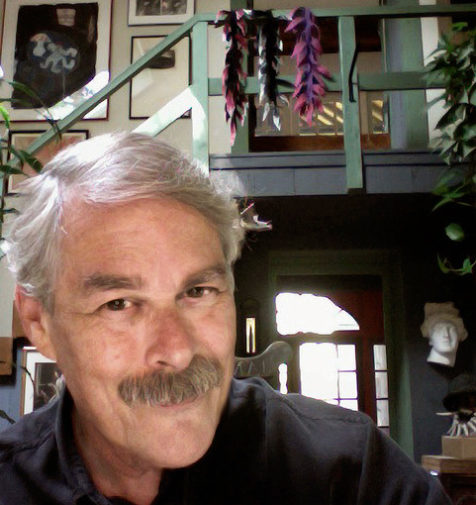

You can view images from Light Sensitive 2018 by clicking here.
Submissions for Light Sensitive 2018 are now closed. For more exhibition opportunities, please visit our Calls for Work page.
Art Intersection presents Light Sensitive, an annual juried exhibition of images created using traditional and alternative photographic processes. Past work has included analog c-prints, platinum/palladium, cyanotype, gelatin silver, gum bichromate, wet plate collodion tintypes and ambrotypes, chemigrams, and other printing processes. Both 2-dimensional and 3-dimensional work may be submitted.
Art Intersection staff will select up to three artists from Light Sensitive to show additional work during the (re)View exhibition in 2018.
scott b. davis is an artist and founder of the Medium Festival of Photography. His photographs are created with wooden view cameras ranging in size from 8” x 10” to 16” x 20”. His photographs explore the Sonoran desert and ordinary urban spaces in the American landscape. davis’s photographic prints are made by hand using the exquisite 19th century process of platinum printing.
His work has been reviewed in the New York Times, the Village Voice, the New Yorker, Los Angeles Times, and other print media. davis’s photographs have been collected by the J. Paul Getty Museum, Pier 24 in San Francisco, the Nelson Atkins Museum of Art, the Santa Barbara Museum of Art, Museum of Photographic Arts, and others.
Step Two: Exhibition Terms and Conditions
Step Three: Submission Form
Step Four: Pay in the Blue Box Above
You can view images from Light Sensitive 2017 by clicking here.
To celebrate our exhibition of (re)View: Abstract, Land, and the Narrative, we hosted a Walk and Talk in the Galleries with Philip V. Augustin, BK Skaggs, and Melanie Walker. Each of the artists spoke about the inspiration surrounding their artwork, how the exhibited pieces evolved, and the conceptual ideas they are interested in. We were grateful for the opportunity to hear their comments and gain some insight into the work of these three fascinating artists! Special thanks to Philip and Melanie who travelled from New Mexico and Colorado to be with us – we’re glad you could be here!
Following the Walk and Talk was an Artist Reception for both (re)View and Imprint, our sculptural exhibition featuring Alexandra Bowers and Mary Meyer, who both had additional pieces available for our Holiday Sale. Thank you to everyone who came out, enjoyed the artwork, and provided thoughtful conversation!

Philip V. Augustin speaks about his work in (re)View
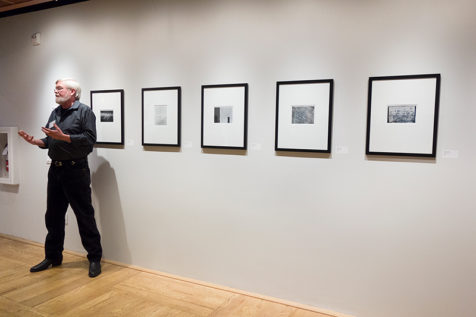
Philip V. Augustin
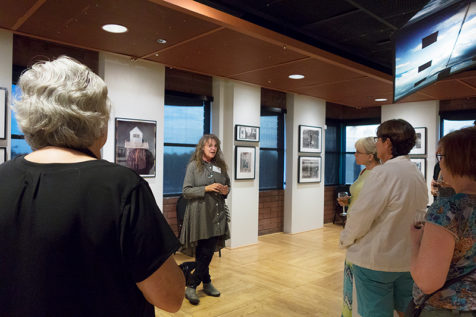
(re)View artist Melanie Walker shares some valuable insight to her artistic inspiration

Melanie Walker
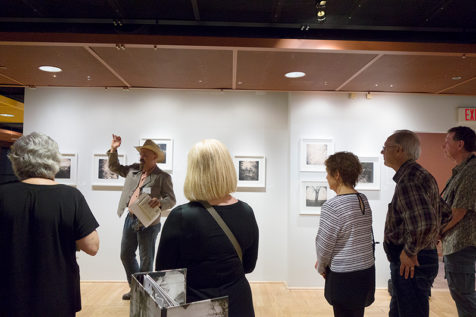
BK Skaggs gives an attentive audience the backstory to his works in (re)View
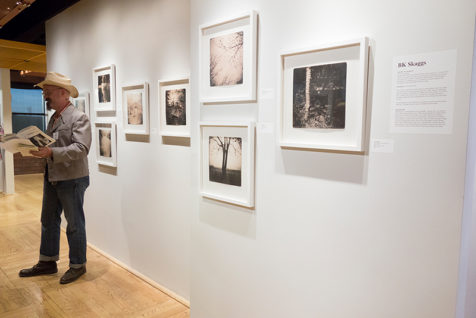
BK Skaggs
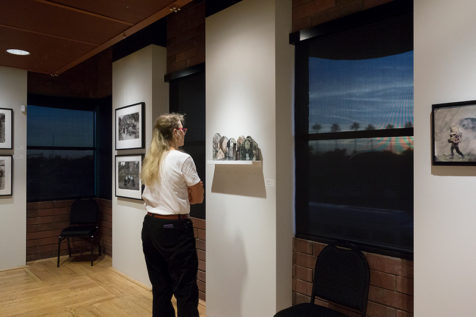

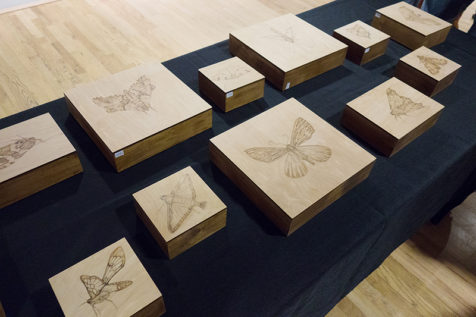
Wood-burned pieces by Alexandra Bowers for the Imprint Artists’ Holiday Sale

Works by Mary Meyer featured in the Imprint Artists’ Holiday Sale


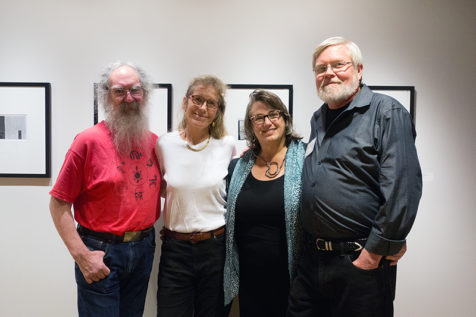
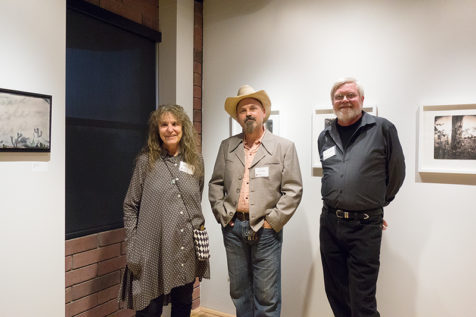
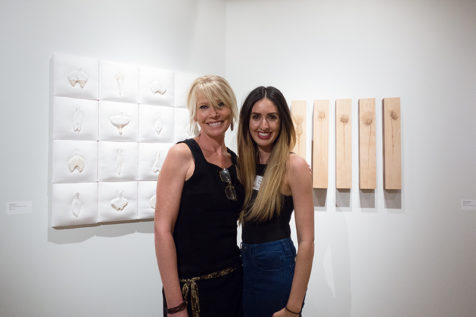
Art Intersection presents Light Sensitive, an annual juried exhibition of images created using traditional and alternative photographic processes. Past work has included analog c-prints, platinum/palladium, cyanotype, gelatin silver, gum bichromate, wet plate collodion tintypes and ambrotypes, chemigrams, and other printing processes. Both 2-dimensional and 3-dimensional work may be submitted.
The Art Intersection curatorial staff will select three artists from Light Sensitive to show additional work during the (re)View exhibition in November 2017.
Click here: Light Sensitive 2017 to view the PDF Light Sensitive 2017 Submission Guidelines
Ann M. Jastrab is currently the gallery director at RayKo Photo Center located in the SOMA arts district in San Francisco near SFMOMA and the Yerba Buena Arts Center. RayKo is a comprehensive photographic facility with rental darkrooms, digital labs, studio and galleries that has been serving the San Francisco Bay Area for over 20 years. RayKo Gallery serves to advance public appreciation of photography and create opportunities for regional, national and international artists to create and present their work. RayKo Gallery offers over 1600 square feet of exhibition space and presents eight to ten exhibitions yearly with many nationally recognized artists; there is also a section of the gallery called The Marketplace that is reserved for Bay Area artists and displays a wide variety of photographic work. RayKo also has a thriving artist-in-residence program.
Besides being a curator, Ann Jastrab, with an MFA degree, is a fine art photographer, master printer, and teacher as well. Ann has curated many exhibitions for RayKo as well as juried exhibitions for the San Francisco Arts Commission, the Academy of Art in San Francisco, Artspan, SFAI, the Center for Fine Art Photography, and other national and international venues outside of San Francisco. She has reviewed portfolios at the Seoul International Photography Festival in Korea, FotoFest, Photolucida, GuatePhoto, Review Santa Fe, Review LA, PhotoAlliance (Our World), SPE, Medium, Palm Springs Photo Festival, Filter, Lishui International Photography Festival in China, and Click646 as well as being a juror for Critical Mass. She has also been teaching courses at the Maine Media Workshops (formerly the Maine Photographic Workshops) in Rockport, Maine since 1994.
Ann is always looking for new artists for the gallery, both for solo shows and group shows. She is most interested in seeing documentary projects, fine art photography, alternative processes/historical process work, and also work made with traditional film cameras as well as plastic and pinhole cameras. Ann is not interested in seeing work that is obviously digitally manipulated. Ann can offer exhibition opportunities as well as resident artist possibilities.
Application to Light Sensitive 2017 is now closed.
You can view images from Light Sensitive 2016 by clicking here.